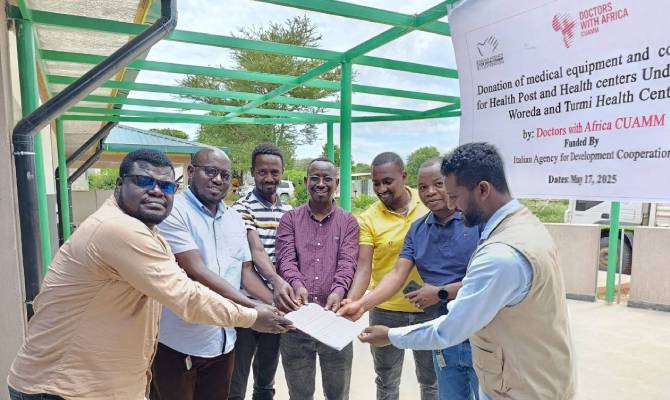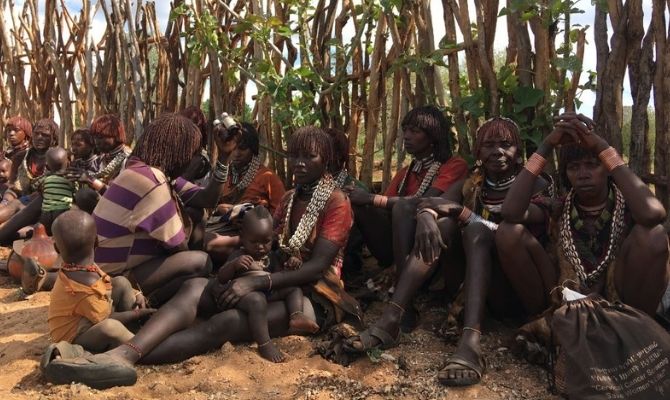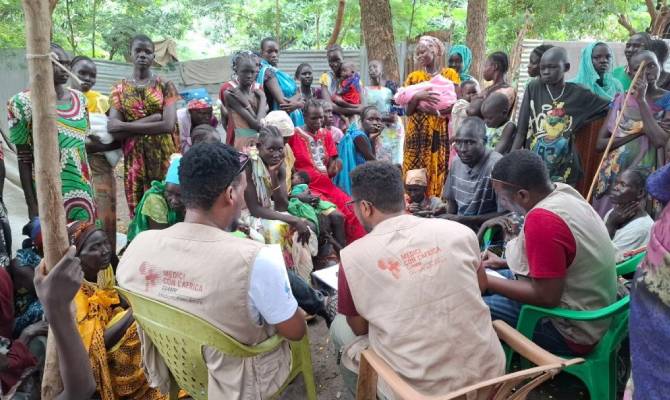A collaboration that starts from the ground up — from the needs of peripheral health centers — and involves district authorities, health and administrative officials from the Hamer district and the city of Turmi (South Omo Zone), with the aim of strengthening the capacity to deliver healthcare services to the most vulnerable populations, with particular attention to women, children, and people with disabilities. This is the goal of the Impact project, implemented by Doctors with Africa CUAMM with the financial support of AICS (Italian Agency for Development Cooperation).
The first results were collected and officially delivered to the Dimeka Health Center on Friday, May 16, during a formal ceremony attended by key officials and stakeholders, including: Matiwos Garsho from the South Ethiopia Region Health Bureau, Tamirat Aseffa and Orion Oysha from the South Omo Zonal Health Department, representatives from the Hamer District and the cities of Turmi and Dimeka, along with CUAMM staff.
As part of the Impact project, we delivered to the Dimeka Health Center a set of tools and equipment previously identified through an assessment conducted in collaboration with local health officials.
“Our mission is to increase healthcare access in Hamer District and the two city administrations. Providing infrastructure and medical resources to health institutions is one of our biggest responsibilities. So far, we have successfully renovated five health posts in the Dimeka cluster and provided them with essential internal furniture and medicines. Through close collaboration with health institutions, we have identified needs and procured critical resources. Additionally, we are working with the Regional Health Bureau to establish a Blood Bank Service for Turmi CEMONC Center / Primary Hospital to further enhance emergency care.” said Mr. Samuel Kebede, CUAMM Project Manager.
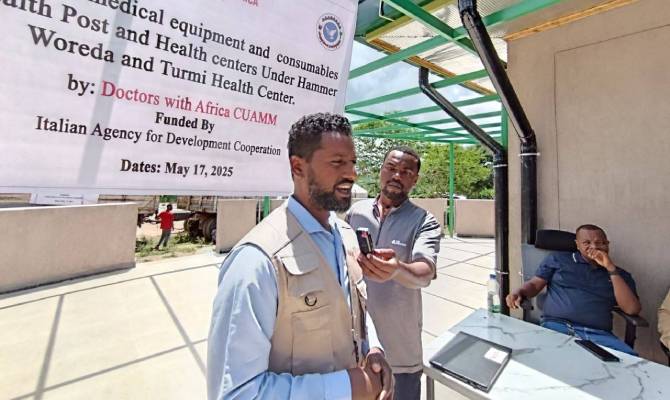
The procurement included a wide range of essential medical items including laboratory reagents, pharmaceuticals, medical consumables, cleaning agents, durable medical equipment, and diagnostic test kits. These items were carefully selected to support clinical, diagnostic, and patient care services comprehensively. Gathered in Dimeka Health Center, participants had the opportunity to visit the facility and see first-hand how the equipment provided will be used and the transformative impact this can have on health service delivery. Later on, they all took part in a dialogue to discuss challenges related to the provision of healthcare service and explore strategies to address the issue.
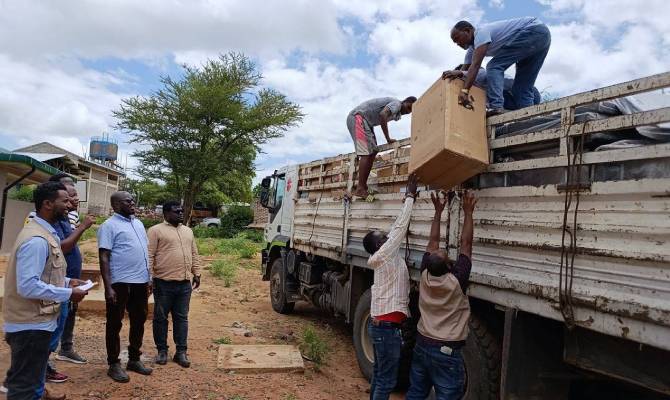
“This donation is of great significance, filling gaps where the government alone cannot easily provide. The donation of medical equipment and resources will have a major impact on improving healthcare accessibility. However, it is crucial that these supplies are properly managed, monitored, and used effectively. Leadership at all levels must ensure accountability so that these resources truly benefit the community. We must also focus on reducing maternal and child mortality, equipping health institutions with both infrastructure and skilled human resources. As a region, we are committed to doing our part.” said Ato Matiwos Garsho, Deputy Head, Southern Ethiopia Regional Health Bureau.
Then Mr. Wosenu Debela, Head of Health Office ad Hamer District stressed the collaboration behind this remarkable result and the importance to acta t multiple level of the health system.
“The donated items were carefully identified through collaborative assessments with the director of the health center, ensuring that all departments and critical gaps in medical equipment, supplies, and drugs are addressed. These resources will directly enhance service quality and promote health service equity, especially at peripheral health post levels. The items will be distributed across all health centers and health posts to make a tangible impact on patient care.”
“This donation is unprecedented in its scope. Many partners provide support, but rarely do we see such a large-scale medical equipment donation targeting all service areas in Hamer District and Turmi Town Administration. We deeply appreciate this valuable contribution. We are immensely grateful to the donor organization and project members for their commitment to identifying shortages and providing real solutions. As leaders, we must ensure that these resources are used properly, supporting experts in their work and maximizing their impact on community health.” Concluded Mr. Maikel Maliko, South Omo Zone Administrator.
In recent years, Ethiopia has experienced a gradual deterioration in internal security and stability, with several areas of the country affected by various forms of violence and conflict. This is further compounded by an economic and social crisis, as well as recurring climate-related challenges, including severe drought. Ethiopia is currently facing one of the worst droughts in decades, having gone through four consecutive failed rainy seasons. The Somali and parts of the Oromia regions are among the most severely affected, particularly agro-pastoral areas, where the drought has worsened long-standing difficulties in accessing basic services — especially for the most vulnerable groups, including women and girls, children, and people with disabilities.
Among the most pressing needs are access to health and nutrition services, psychosocial support, education, water and energy, and support for agricultural and income-generating activities.
Doctors with Africa CUAMM, with the support of the Italian Agency for Development Cooperation (AICS), is currently operating in the districts of Chifra and Hamer, more specifically in the areas of Wa’ama and Dimeka, where access to social and health services is severely compromised. Through comprehensive support to peripheral health centers, CUAMM, in collaboration with local health authorities, is implementing a multi-sectoral intervention in the fields of health, nutrition, education, WASH (Water, Sanitation and Hygiene), and protection, aimed at reaching vulnerable populations.
This initiative is aligned with the strategic priorities outlined in the Health Sector Transformation Plan.

